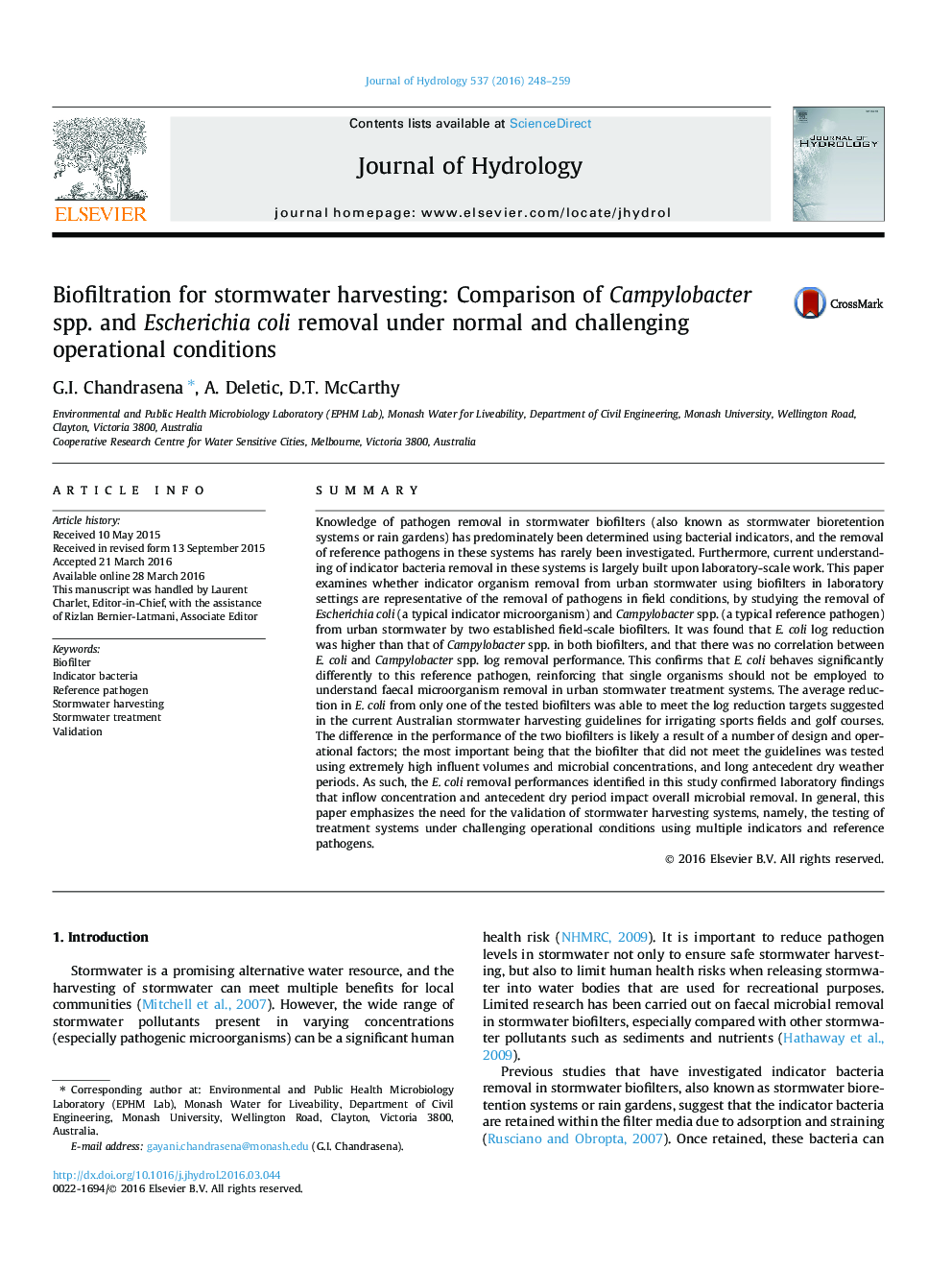| کد مقاله | کد نشریه | سال انتشار | مقاله انگلیسی | نسخه تمام متن |
|---|---|---|---|---|
| 6409798 | 1629915 | 2016 | 12 صفحه PDF | دانلود رایگان |

- Reference pathogen and indicator removal in two field biofilters are presented.
- E. coli log reduction is higher than that of Campylobacter spp. in both systems.
- There is no correlation between E. coli and Campylobacter log removal performances.
- Inflow concentration and antecedent dry period affect overall microbial removal.
- Removal performance decreases under challenging operational conditions.
SummaryKnowledge of pathogen removal in stormwater biofilters (also known as stormwater bioretention systems or rain gardens) has predominately been determined using bacterial indicators, and the removal of reference pathogens in these systems has rarely been investigated. Furthermore, current understanding of indicator bacteria removal in these systems is largely built upon laboratory-scale work. This paper examines whether indicator organism removal from urban stormwater using biofilters in laboratory settings are representative of the removal of pathogens in field conditions, by studying the removal of Escherichia coli (a typical indicator microorganism) and Campylobacter spp. (a typical reference pathogen) from urban stormwater by two established field-scale biofilters. It was found that E. coli log reduction was higher than that of Campylobacter spp. in both biofilters, and that there was no correlation between E. coli and Campylobacter spp. log removal performance. This confirms that E. coli behaves significantly differently to this reference pathogen, reinforcing that single organisms should not be employed to understand faecal microorganism removal in urban stormwater treatment systems. The average reduction in E. coli from only one of the tested biofilters was able to meet the log reduction targets suggested in the current Australian stormwater harvesting guidelines for irrigating sports fields and golf courses. The difference in the performance of the two biofilters is likely a result of a number of design and operational factors; the most important being that the biofilter that did not meet the guidelines was tested using extremely high influent volumes and microbial concentrations, and long antecedent dry weather periods. As such, the E. coli removal performances identified in this study confirmed laboratory findings that inflow concentration and antecedent dry period impact overall microbial removal. In general, this paper emphasizes the need for the validation of stormwater harvesting systems, namely, the testing of treatment systems under challenging operational conditions using multiple indicators and reference pathogens.
Journal: Journal of Hydrology - Volume 537, June 2016, Pages 248-259